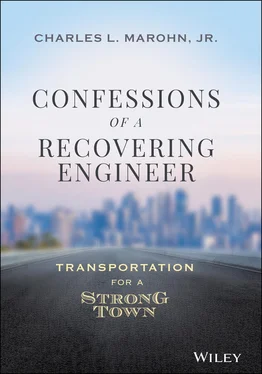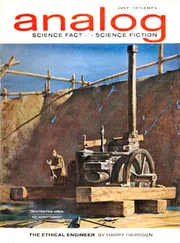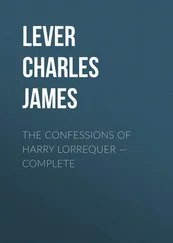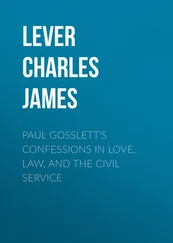What Gonzalez did was very dangerous. She did it despite the clear warnings. She did it to save a couple minutes of time. She did it despite having two small children in her care, young people who would face the risk with her and pay a heavy price.
This was Gonzalez's choice. It is easy to say this was Gonzalez's fault.
Too easy. It wasn't her fault.
That night Sagrario Gonzalez made fateful decisions about how to navigate an environment where her existence was, at best, an afterthought, and at worst, a nuisance. The options she had available to her were the result of the underlying values applied to the design of State Street — values reflected in similar environments across North America and wherever around the world American design practices are being emulated.
The professionals who design streets follow a practice codified in the decades since the Great Depression. Engineers who do this work learn it as a practice, as a body of technical knowledge that has been amassed over generations. While one book or another of engineering standards is often referred to as “the bible” by those who use them, that reference is due more to their centrality to the practice of engineering than to the type of wisdom imparted.
While the religious debate passages of the Bible, contrasting different teachings in a search for deeper truth, the codes of an engineering manual are more like a cookbook. If you wish to make a certain type of chocolate cookie, a cookbook will provide the common ingredients found in cookies and the specific way to arrange them for a particular recipe. Likewise, if you wish to build a certain type of street, an engineering manual will explain the way to assemble all of the components so that you get the desired outcome.
What is expected in a religious text, but not in a cookbook, is deeper meaning. Few people question the underlying values contained in a fruit salad recipe. None search for hidden truth in the list of ingredients for a souffle. The recipes in a standard cookbook do not have an underlying ideology or belief system attached to them. A cookbook is viewed as value free. It is merely instructions for assembling ingredients into finished foods.
Transportation professionals consider their texts, and by extension their entire profession, as being similarly value free. This is wrong.
At the foundation of traffic engineering is a collection of deeply infused values. These values are so deep, and so core to the profession, that practitioners do not consider them values. They bristle at the suggestion. For practitioners, these values are merely self-evident truths — something like gravity that it is not necessary to believe in because it just is.
These values are expressed in the range of options that engineers consider, the way that they discuss different approaches, and the transportation systems that they build. This would not be a problem, and we could allow this entire profession to retain their sacred texts and practices unchallenged by heretical viewpoints, if they could find a way to address the damage traffic engineering is doing to our communities.
They cannot do this for a simple reason: The damage being done is the culmination of those values. The injuries and deaths, the destruction of wealth and stagnating of neighborhoods, the unfathomable backlog of maintenance costs with which most American cities struggle, are all a byproduct of the values at the heart of traffic engineering. Addressing the damage requires addressing the values, but you cannot address something that you deny even exists.
The underlying values of the transportation system are not the American public's values. They are not even human values. They are values unique to a profession that has been empowered with reshaping an entire continent around a new, experimental idea of how to build human habitat.
Let us identify those values.
When an engineer sits down to design a street, they begin the process with the design speed. I have been in countless meetings where engineers presented technical design sheets and even in-depth studies for a street project. Never, and I mean never, was any elected official or any member of the public asked to weigh in on the design speed.
Never once did I hear one of my fellow professional engineers say, “So, what are you trying to accomplish with this street in terms of speed?”
No. The design speed is solely the purview of the engineering professional, with a preference for accommodating higher speeds over lower.
Why?
Choosing a design speed is, by its nature, an application of core values. When we pick a speed, we are selecting among different, competing priorities. Is it more important that peak traffic move quickly, or is it more important to maximize the development potential of the street? Do we compromise the safety of people crossing on foot in order to obtain a higher automobile speed, or do we reduce automobile speed in order to improve safety for people outside of a vehicle?
These are policy decisions, and like all policy decisions, they should be decided by some duly elected or appointed collection of public officials. In a democratic system of representative government, representatives of the people should be provided the full range of options and be allowed to weigh them against each other. That rarely happens, and I have never heard of an instance where it has happened for a local street.
Many of my engineering colleagues will reply that they do not control the speed at which people drive — that travel speed is ultimately an enforcement issue. Such an assertion should be professional malpractice. It selectively denies both what engineers know and how they act on that knowledge.
For example, professional engineers understand how to design for high speeds. When building a high-speed roadway, the engineer will design wider lanes, more sweeping curves, wider recovery areas, and broader clear zones than they will on lower-speed roadways. There is a clear design objective — high speed — and a professional understanding of how to achieve it safely.
There is rarely any acknowledgment of the opposite capability, however: that slow traffic speeds can be obtained by narrowing lanes, creating tighter curves, and reducing or eliminating clear zones. High speeds are a design issue, but low speeds are an enforcement issue. That is incoherent, but it is consistent with an underlying set of values that prefer higher speeds.
Once the engineer has chosen a design speed, they then determine the volume of traffic they will accommodate. How many motor vehicles will this street be designed to handle? This is the second step of the design process, and the second instance where the design professional independently makes a decision that is, at its heart, a value decision.
Standard practice is to design the street to handle all of the traffic that routinely uses it at present, plus any increase in traffic that is anticipated in the future. There is no consideration given as to whether that is too much traffic for the street, and rarely is there a conversation of whether other alternatives should be considered. If traffic is present, it is the traffic engineer's calling to accommodate it. No nonprofessional is given an opportunity to suggest otherwise.
Now that they have identified the design speed and traffic volume, the traffic engineer consults one of the books of standards to determine how to assemble a safe street. Given a certain speed and volume, how does the design cookbook indicate the street's ingredients be assembled? Within the design process, the answer to that question is, by definition, safe. Any other design would generally be considered a compromise of safety.
The final step of the design process then is to take the “safe” design and determine how much it will cost. This dollar amount is the price for a responsible street design. Any questioning of this minimum effort would be considered a reckless endangerment of human life.
Читать дальше












